|
 Secure Site
Secure Site
|
 |
Archive for the 'Now & Zen Alarm Clocks' Category
 Mediative Snorkeling I am, for lack of a better term, a meditation dropout. Oh, I’ve tried it all: the standard legs-crossed, deep-breathing variety (which made me stir-crazy after a few endless minutes); Pilates classes (where I managed to pull a muscle just learning to breathe properly); and t’ai chi instruction (which ended with gentle reprimands by my instructor that walking meditation was not a form of aerobic exercise). They all left me anxious and restless. I couldn’t let go and simply be present in the moment—a hallmark of my type-A personality. That all changed on a Caribbean vacation. There, I inadvertently learned even action-obsessed people like me can achieve satori.
Now, you may think that just being on a serene beach relaxing should help instill a meditative state. Not so for someone who every day had proudly recited the mantra “Go, go, go, faster, faster, faster.” But the morning I donned a snorkeling mask and submerged into the quiet, mystical world beneath the sea, my life began to change. I can still feel the magic of that first glimpse: a bright red starfish, a giant spotted ray gliding by like a bird in flight, and hundreds of silversides swimming in synchronized motion. It transported me to another realm.
Immersed in beauty, color, and silence, I was forced not to move too much or too suddenly, or the creatures around me would scatter. For the first time ever, I could be still. Minutes slipped away unnoticed, as the simple cadence of breathing in and breathing out became stronger and stronger. Lost in a dreamy world where parrot fish, barracuda, and even sea turtles swam by me as if I were invisible, I learned that submitting completely to silence brings an exhilarating, nerve-tingling rush.
Now, back in Pennsylvania, whenever I feel stressed, I lie down, set my Meditative Chime Timer by Now & Zen, and visualize that moment when I place my face in the water and hear only the gentle waves breaking on the shore as I breathe deeply and glide ever so smoothly through warm, clear water filled with beauty. Breathing in and breathing out, I float and meditate while angelfish lead the way.
adapted from Natural Solutions, March 2007 by Vickit McIntyre
 Meditation timers with chimes for a natural sounding end to your meditation Now & Zen’s Chime Timer Shop
1638 Pearl Street
Boulder, CO 80302
(800) 779-6383
Posted in Chime Alarm Clocks, Meditation Timers, Meditation Tools, mindfulness practice, Now & Zen Alarm Clocks, Well-being, Zen Timers
 Pink Orchid Stop.
Take a deep breath. As author Martin Boroson says in his new book, One Moment Meditation, that’s all we really need to do to meditate, or be in the present moment. Just a minute. And, his entire book is devoted to this one, absolutely necessary minute. Seem overkill? It did at first to me as well, but as I started diving into the book, I found myself effortlessly slipping into one-minute meditations throughout my day, which says a lot as a mother of a one-year-old. I could even meditate and find stillness parked in the driveway, as long as I found spaciousness in my body and focused on my breath for a few seconds. Boroson notes throughout the book that learning to take these pauses will eventually become habitual—unlike the 30-minute meditations we’re privy to once a week, during our yoga class. While this technique may not take you from here to enlightenment, this is the book for those of us who want to meditate, know we should meditate, but find time just gets in the way. Those of us who really need to meditate. As Boroson notes, “if you really believe . . . that you can’t afford a minute, it’s a very good indication that you need a minute desperately, and that everyone else needs you to take one, too.”
Our Zen Timepiece’s acoustic 6-inch brass bowl-gong clock is the world’s ultimate alarm clock, practice timer, and “mindfulness bell.”
It fills your environment with beautifully complex tones whenever it strikes. In the morning, its exquisite sounds summon your consciousness into awakening with a series of subtle gongs that provide an elegant beginning to your day. Once you experience the Zen Timepiece’s progressive awakening, you’ll never want to wake up any other way. It also serves as the perfect meditation timer.
adapted from Healing Lifestyles & Spas
 Zen Timepiece, a meditation timer with bowl/gong Now & Zen
1638 Pearl Street
Boulder, CO 80302
(800) 779-6383
Posted in Bamboo Chime Clocks, Meditation Timers, Meditation Tools, Now & Zen Alarm Clocks, Zen Timers
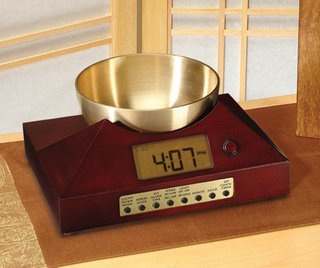 Zen Timepiece with brass singing bowl Singing bowls are unique because they are multiphonic instruments, producing multiple harmonic overtones at the same time. The overtones are a result of using an alloy consisting of multiple metals, each producing its own overtone.
New bowls can also produce multiple harmonic overtones if they are high quality bronze, but many are made from a simpler alloy and produce only a principal tone and one harmonic overtone.
adapted from wikipedia.org
 Zen Timepiece, a brass singing bowl clock and timer
Our Zen Timepiece’s acoustic 6-inch brass bowl-gong clock is the world’s ultimate alarm clock, practice timer, and “mindfulness bell.”
It fills your environment with beautifully complex tones whenever it strikes. In the morning, its exquisite sounds summon your consciousness into awakening with a series of subtle gongs that provide an elegant beginning to your day. Once you experience the Zen Timepiece’s progressive awakening, you’ll never want to wake up any other way. It also serves as the perfect meditation timer. Available in 5 wood styles, including bamboo (shown).
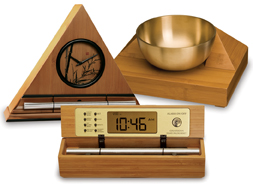 Singing Bowl Alarm Clock Now & Zen’s Singing Bowl Alarm Clock Shop
1638 Pearl Street
Boulder, CO 80302
(800) 779-6383
Posted in Chime Alarm Clocks, Japanese Inspired Zen Clocks, Meditation Tools, Now & Zen Alarm Clocks, Progressive Awakening, Well-being, Yoga Timer, Yoga Timers by Now & Zen, Zen Timepiece by Now & Zen, Zen Timers
 Ukiyo-e Madame Print Being startled awake by a buzzer alarm, or awakened by the unpredictable noise of a clock radio, is certainly less than ideal. We fall asleep gradually and it is only natural to wake up gradually. The Zen Alarm Clock’s gradually increasing 10 minute sequence of gentle acoustic chimes or gongs makes waking up a graceful and soothing experience.
Zen Clocks “gently summon your consciousness into a waking state” in a way that helps preserve dream memories and is easy on your psyche. It also helps you replicate the gradual process of waking up naturally when your body is ready, even while adding the assurance of an alarm clock to get you up on time.
When you have a Zen Alarm Clock, you actually look forward to the morning “alarm.” Moreover, the visual and sonic beauty of the Zen Clock adds to the aesthetic beauty of your bedroom, which is another important aspect of a holistic sleep environment. Every Zen Alarm Clock comes with a 40 page booklet that describes how it can be used for dreamwork, affirmations, and meditation.
 Black Lacquer Zen Alarm Clock Now & Zen’s Chime Alarm Clock Shop
1638 Pearl Street
Boulder, CO 80302
Posted in Chime Alarm Clocks, Japanese Inspired Zen Clocks, Natural Awakening, Now & Zen Alarm Clocks, Progressive Awakening
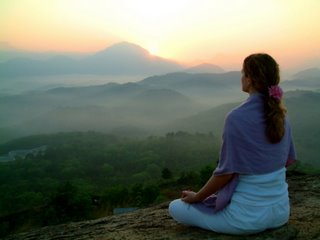 meditation sunrise Big Sky Mind
After a while, turn your attention from the surface of the lake toward the sky itself. Then imagine shifting your gaze from the reflections, the passing phenomena, to the sky within which they all arise and pass away. The sky is boundless, limitless. It contains everything that arises. The horizon is only a perceptual or conceptual boundary that can never be reached. Even on the cloudiest day, the sky is luminous above the clouds, pervasive, limitless, and free.
Awareness has the qualities of luminosity and limitlessness. It is present always, behind, between, and beyond all the ever-changing phenomena. Whenever you catch yourself identifying with the mental “clouds,” simply shift your identification from the clouds to the sky itself. Realize that what you’ve been seeking is what you already are and have always been! Big Sky Mind opens us to seeing that our true nature is this awareness within which all experience arises and passes away.
Our Zen Timepiece’s acoustic 6-inch brass bowl-gong clock is the world’s ultimate alarm clock, practice timer, and “mindfulness bell.”
It fills your environment with beautifully complex tones whenever it strikes. In the morning, its exquisite sounds summon your consciousness into awakening with a series of subtle gongs that provide an elegant beginning to your day. Once you experience the Zen Timepiece’s progressive awakening, you’ll never want to wake up any other way. It also serves as the perfect meditation timer.
adapted from Yoga Journal, by Frank Jude Boccio
 Zen Timepiece with brass singing bowl, a meditation timer Now & Zen
1638 Pearl Street
Boulder, CO 80302
(800) 779-6383
Posted in intention, Japanese Inspired Zen Clocks, Meditation Timers, Meditation Tools, mindfulness practice, Now & Zen Alarm Clocks, Well-being, Zen Timers
 Ohara Koson (1877~1945) Herons. Meiji period Now & Zen’s favorite architectural element in the castles of Japan (like, Matsumoto Castle, one of Japan’s finest historic castles) is the “moon-viewing” room.
This tradition is descripted below:
Tsukimi or Otsukimi, literally moon-viewing, refers to Japanese festivals honoring the autumn moon.
Tsukimi refers to the Japanese tradition of holding parties to view the harvest moon. The custom is thought to have originated with Japanese aristocrats during the Heian period, who would gather to recite poetry under the full moon of the eighth month of the lunisolar calendar, known as the “Mid-Autumn Moon.”
One of the ultimate Zen like experiences is waking-up from a great slumber refreshed and energized. Your mind and body are harmoniously one, both alert and focused. Having a refreshed mind and body are two keys to a natural and Zen lifestyle. Waking up in the morning should not be a loud and abrupt awakening, but rather it should be a peaceful positive experience. The right natural alarm clock can transition your deep and tranquil sleep into a serene start to consciousness. Imagine a long-resonating Tibetan bell-like chime waking you up to a beautiful morning experience.
The right alarm clock can be the most beneficial investment for you. With our Now & Zen natural alarm clock you are awakened more gradually and thus more naturally. Now & Zen is focused on creating a naturalistic lifestyle, and our clocks are an example of our philosophy.
Now & Zen’s – Meditation Timer and Alarm Clock Store
1638 Pearl Street
Boulder, CO 80302
(800) 779-6383
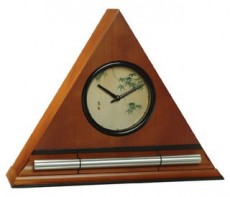 Japanese Leaves Zen Alarm Clock
Posted in Japanese Inspired Zen Clocks, Natural Awakening, Now & Zen Alarm Clocks, Progressive Awakening
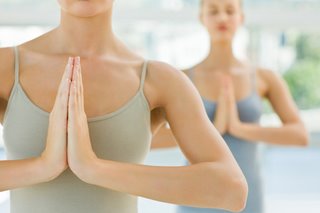 yoga at home I got into yoga as a college student on a typically tight budget. To save money I decided to memorize my favorite sequence and practice at home. It was love at first Sun Salute. But not so much in class, where I obediently followed along, trying my best to keep up with a fast-moving flow, diligently taking the inevitable corrections, and silently cursing the woman next to me who was clearly related to Gumby.
Practicing at home gave me the time and the freedom to play in the poses and see how my body reacted. “You can feel when a pose is right and when it’s a little off,” says Barbara Benagh, a Boston yoga instructor and home practice veteran. “If it doesn’t feel right, it doesn’t matter how good it looks.” My first uncertain, bumbling adjustments eventually guided me to a better understanding of yoga as well as my own strengths, limitations, and needs.
Think of yoga, especially a home practice, as a learning process. There will be fits and starts, but you’re not alone in your struggle for consistency. “Sometimes the challenge is doing it at all,” admits Benagh. But once you step on the mat, you can let the practice take shape. Whether you stick to a specific sequence or just muddle through a few of your favorite poses, you’re still doing yoga. Give yourself permission to explore the poses that attract you and, just as importantly, those that you resist. Tune into how your breath feels, where your mind goes, and the sensations that each pose invites. Avail yourself of books, DVDs, and websites (see “At-home helpers” on page 58 for suggestions), and go at your own pace. Once in a while get a yoga checkup by going to a class that emphasizes adjustments or splurging on a yoga private session.
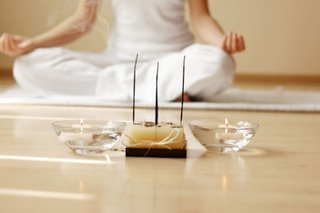 yoga at home, use a yoga timer tool from Now & Zen The bonuses of a steady practice may surprise you—improvements in your health, strength, flexibility, and general quality of life. A new study published in the Journal of Alternative and Complementary Medicine reports that just one week of daily yoga practice increases spinal flexibility and decreases pain in people suffering from chronic low back pain. Plus you’ll strengthen your body’s ability to fight disease: A 2007 study analyzing antioxidant levels in the blood found that study participants who had practiced yoga for six months had significantly higher levels of free radical–fighting antioxidants in their blood than the control group.
My home practice was born of financial limitation, but I’ve stuck with it for many different reasons: self-nurturing when I’m feeling down or during that-time-of-the-month, a busy schedule, convenience, a chance to work on difficult poses in the privacy of my own home (with no Gumbies around). Whatever inspires you to begin a home practice, this easy-to-follow guide can help you succeed.
The yoga of distraction
You don’t need a private studio to have a successful home practice. But it does help to create a space you can come back to where you feel comfortable and focused. Distracted by a cluttered room? Take five minutes to tidy up before stepping on the mat; it can be a great way to center yourself for each session. Have trouble staying put? Benagh suggests you use music—just practice for the length of one album or playlist—to provide some structure as well as motivation to stick it out. But she reminds us that, “one element of yoga is discipline and exertion. Be patient with the process, and you will build stamina by continuing to persevere even when you get discouraged.”
 Kid Yoga Lotus Pose Focus on the breath
Yoga’s mindful breathing sets it apart from most other forms of exercise. This diaphragmatic or belly breathing begins in the abdomen rather than the chest, pulling the air deeper into the lungs, which fosters more complete oxygen–carbon dioxide exchange. To tune in to your breath, sit comfortably, and rest your hand on your belly. As you inhale, feel your belly filling up with breath; as you exhale, allow your belly to empty.
By linking your inhale and exhale to your movements, you can use the breath as a powerful guide for your yoga practice. Pay attention to the quality of the breath. If it feels jagged, you may be working too hard. Ease up or go into Child’s Pose until you feel ready to move again. If your breath becomes very slow or lazy, you may be losing focus. Challenge yourself to stay more alert and active in your practice. If at any point you lose track of your breathing, that’s OK. Just notice it, and come back.
Build a sequence
A balanced sequence of poses moves your body and spine through its full range of motion—circulating oxygen-rich blood, eliminating toxins, stretching and lubricating the entire body. Every asana (body) falls into at least one, and sometimes several, of eight categories—standing, balancing, forward bends, backbends, hip openers, twists, inversions and restoratives. Each type offers different benefits, challenges, and insights.
Standing postures ground your energy, revitalize the legs, improve balance and digestion, build bone density, and lubricate joints. * Balancing postures improve balance, build bone density, focus the mind, and strengthen the joints. * Backbends open the chest and heart, relieve depression, keep the spine supple, and energize body and mind. * Forward bends soothe the nervous system, release tension in the back, and promote sound sleep. * Hip openers promote pelvic, prostate, and reproductive health and reduce sciatic pain. * Twists lubricate the spine and tone and detoxify the organs. * Inversions tone and relax the organs, recirculate blood, center the mind, and improve concentration. * Restorative postures do exactly that: Restore mind and body and reduce stress and tension.
 yoga practice The four Bs
* Blocks help you maintain proper alignment while you build strength and flexibility. * A belt supports you in restorative poses and helps you stay aligned and safe as you stretch. * A bolster supports your body in passive, restorative poses. * A blanket can be used in lieu of or in addition to a bolster to make you more comfortable and help you relax.
Now you’re ready to go. Try the following sequence, courtesy of yogis Rodney Yee and Colleen Saidman, creators of the Gaiam Yoga Club, an online community offering healthy home practices anyone can do.
1. Mountain Pose
(Tadasana)
How to: Stand with your feet parallel, heels slightly apart, and big toes touching. Broaden your collarbones, press your shoulder blades into the back to open up your chest, and place your arms by your sides. Lengthen through the sides of your waist, and balance your head over your shoulders, feeling a sense of ease (and no tension) in the neck. Breathe here for eight to 10 breaths.
standing pose
2. Tree Pose (Vrksasana)
How to: From Mountain Pose, bring your right foot up and press it against the inside of your left thigh or calf, or rest your right heel on the inside of your left ankle. Keep your hips facing the front and your right knee opening out to the side. Stay here for five to eight breaths; release your right leg to the floor and return to Mountain Pose. Repeat pose on the other side.
Variation: Hold on to the back of a chair or touch the wall for balance if you need to. Caution: Don’t rest your foot against your knee as this can cause strain in the joint.
standing; balance; hip opener
3. Standing Forward Bend
(Uttanasana)
How to: From Mountain Pose, exhale and fold from the hips (not the waist), and bring your hands to the floor beside your feet. Keep your knees lifted, relax the low back, and soften the belly. Stay here for five to eight breaths.
Variation: Rest your hands on blocks if they don’t reach the floor; bend your knees to avoid stress on your lower back. Caution: If you have sciatica, you may want to avoid this posture.
standing; forward bend; inversion
4. Downward-Facing Dog Pose (Adho Mukha Svanasana)
How to: From Standing Forward Bend, step your feet back, coming into a plank position (yoga push-up position—arms straight, shoulders over hands, and legs straight so that your body forms a flat plank). Exhale and lift your sit bones toward the ceiling, pressing into your palms and inner arms. Keep the kneecaps lifted; reach your heels toward the floor. Stay here for five to eight breaths, and work up to 15 breaths. Step your right foot between your hands, then your left foot, returning to Mountain Pose.
Variation: Rest your forehead on a block (to ease a headache, calm your nerves, or cool a hot flash).
standing; inversion
5. Triangle Pose (Trikonasana)
How to: From Mountain Pose, step your feet about 3 to 4 feet apart. Turn your left foot slightly inward and your right foot out 90 degrees; the heel of your right foot should be in line with the heel of your left. Stretch your arms out to the sides, lift up through the front of your thighs, and press your shoulder blades into your back to open your chest. Exhale, and keeping both sides of your waist long, extend your trunk to the right and bring your right hand down to your shin or a block. Stretch your left arm up to the ceiling. Look straight ahead or up at your left hand. Rotate your belly toward the ceiling. Hold for five to eight breaths. On an inhalation, lift up and turn your feet back to a parallel position. Repeat on your left side, then turn your toes forward and step back into Mountain Pose. Note: The object is to support and open the chest by keeping your spine and waist long. Don’t worry about bringing your hand all the way down to the floor.
Variation: Place a block on the outer edge of your right foot to support your hand.
standing; hip opener; twist
6. Extended Side Angle Pose
(Utthita Parsvakonasana)
How to: From Mountain Pose, step your feet out slightly wider than you did for Triangle Pose. Turn your right foot out 90 degrees and your left foot slightly inward. The heel of your left foot should line up with the heel of your right. Stretch your arms out to the sides, exhale, and bend your right knee so that your thigh is parallel to the floor. On your next exhale, extend your trunk to the right, keeping both sides of your waist long, and bring your right hand down to a block (or rest your elbow on your thigh). Stretch your left arm up over your left ear, rotate your belly toward the ceiling, and look up under your armpit. Breathe and hold this pose for five to eight breaths. Inhale as you lift up, and straighten your torso. Repeat on the left side and then step back into Mountain Pose.
Caution: Don’t do this pose if you have arthritis of the knee or very low blood pressure.
standing; hip opener; twist
7. Cobra Pose (Bhujangasana)
How to: Lie flat on your stomach, forehead on the floor. Bring your hands beside your chest so that your forearms are perpendicular to the floor and your elbows are tucked in to your sides. Inhale, lift up from your chest, elongating your waist and spreading your collarbones wide. (You should not feel a pinch in your lower back in this gentle backbend). Keep your legs active and pelvis on the mat. Hold for five to eight breaths. On an exhalation, release back into the floor, turn your head to the side and rest for a moment before repeating.
Caution: Do not do this pose if you are more than three months pregnant.
backbend
8. Bound Angle Pose (Baddha Konasana)
How to: Sit with your back straight and your belly lifted. Bend your legs, and bring the soles of your feet together in front of you, allowing your knees to open out to the side. Hold your ankles, and draw your heels toward your pubic bone. Gently lower your knees as far as possible. Put your hands on the floor behind you to sit up taller and encourage the natural curves of the spine. Stay here for eight to 10 breaths.
Variation: Sit with hips on a folded blanket or a bolster and feet on the floor if your knees come up higher than your waist. Place a block under each thigh.
hip opener 9. Simple Seated Twist Pose
(Parivrtta Sukhasana)
How to: Sit cross-legged on the mat. Lengthen through the sides of your waist and elongate your spine. Place you left hand on your right knee and bring your right hand to the floor behind you. Keeping your hips facing straight ahead, begin twisting to the right from your belly first, then your ribcage, chest, and shoulders. Look over your right shoulder. Stay here for five to eight breaths. Come back to the front and repeat on the other side.
Variation: Place a block behind you to support your hand; sit up on a folded blanket with your knees and feet on the floor.
Caution: Avoid this pose if you have a cold or congestion in your chest.
twist
10. One-Legged Forward Bend (Janu Sirsasana)
How to: With your legs stretched out in front of you, bend your left knee and place your left foot on the inside of your right leg, near your groin. Keeping the right leg straight, turn your abdomen and chest so your sternum is in line with the center of your right leg. Inhale and stretch up. Exhale as you reach your arms out in front of you, and fold your trunk forward over your right leg. Stay here for at least eight breaths or longer if you like.
Variation: If you have tight hamstrings, wrap a belt around the base of your right foot and hold onto it as you fold forward. For a more restorative pose, put a bolster on your outstretched leg and rest your head and arms on the bolster.
Caution: Don’t do this pose if you have sciatica.
forward bend; twist
11. Corpse Pose (Savasana)
How to: Lie on your back with your legs stretched out in front of you. Rest your arms at your sides, slightly away from your torso, palms facing up. Actively stretch your arms and legs away from you, then allow them to release completely. Close your eyes, and let everything relax. Let your breathing become natural and effortless. Rest here for five to 10 minutes.
Variations: Place a folded blanket or bolster under you knees to release the back muscles. Cover up with a blanket if you feel cold. You can also use an eye pillow to help the eyes and brain relax.
Use our unique “Zen Clock” which functions as a Yoga Timer. It features a long-resonating acoustic chime that brings your meditation or yoga session to a gradual close, preserving the environment of stillness while also acting as an effective time signal. Our Yoga Timer & Clock can be programmed to chime at the end of the meditation or yoga session or periodically throughout the session as a kind of sonic yantra. The beauty and functionality of the Zen Clock/Timer makes it a meditation tool that can actually help you “make time” for meditation in your life. Bring yourself back to balance.
Adapted from Natural Solutions Magazine, August 2008, by Nora Simmons
 Bamboo Zen Chime Clocks & Yoga Timers Now & Zen – The Yoga Timer Store
1638 Pearl Street
Boulder, CO 80302
(800) 779-6383
Posted in Bamboo Chime Clocks, Chime Alarm Clocks, Now & Zen Alarm Clocks, Yoga Timer, Yoga Timers by Now & Zen
 Courtesan of Montoya with Zen Monk by Suzuki Harunobo, ca. 1770 People in need of a creative boost should take a long nap, according to new research highlighted by ScienCentral. The researchers found that naps increase people’s ability to solve problems creatively, but only if the nap includes REM, the deep sleep when dreams occur. REM sleep happens only after about an hour of sleeping, so a long nap is recommended. According to researcher Sara Mednick, “If you take a nap with REM sleep, you’re actually going to be boosting your ability to make these new associations in creative ways.” Mednick has tried to put her findings to good use by taking a nap at least three times each week. It is helpful to use the Zen Alarm Clock for a gentle awakening from a nap.
What makes this gentle awakening experience so exquisite is the sound of the natural acoustic chime, which has been tuned to produce the same tones as the tuning forks used by musical therapists. According to the product’s inventor, Steve McIntosh, “once you experience this way of being gradually awakened with beautiful acoustic tones, no other alarm clock will ever do.”
adapted from Utne.com,September 2009 by Bennett Gordon
 Zen Alarm Clocks for a gradual and progressive awakening to a nap, to boost creativity Now & Zen’s Alarm Clock Store
1638 Pearl Street
Boulder, CO 80302
Posted in Chime Alarm Clocks, Japanese Inspired Zen Clocks, Natural Awakening, Now & Zen Alarm Clocks, Progressive Awakening, Sleep Habits, Well-being
 Sustainable bamboo Zen Timers and Clocks by Now & Zen Inc. Boulder Colorado-based Now & Zen, Inc., maker of the world famous Zen Alarm Clock®, has recently launched a new line of sustainable bamboo Zen Clocks. The decorative, triangle-shaped clocks feature a long-resonating acoustic chime that wakes users gradually over 10 minutes. When the alarm is triggered the clock strikes its chime just once, then it strikes again in 3 minutes … then in 3 minutes … then 1 minute … providing a pre-programmed sequence of chimes that makes waking up a graceful experience.
 Sustainable bamboo Canes Growing in the Wild Now & Zen introduced its original Zen Alarm Clock in 1996, but according to company founder and president, Steve McIntosh, these sustainable bamboo clocks are the most beautiful of all their designs. “I’m really proud of the form, function, and sustainability profile of our new bamboo Zen Alarm Clock, it’s our greenest product yet,” said McIntosh. The bamboo Zen Clock is available in four different dial face choices, with each dial silkscreened directly on bamboo veneer for an integrated, natural look. The new sustainable bamboo dial faces include one with contemporary numbers, one with simple modern lines, one with the Japanese character for “dream,” and a “bamboo leaf and stalk motif” inspired by Chinese ink painting.
 Tehya with Steve McIntosh, Inventor of Zen Alarm Clocks in Japan The wood used in all Now & Zen products is sustainably grown on tree farms, and the company operates according to a strict policy of environmental sustainability for all its operations. However, the introduction of the company’s sustainable bamboo line sets a new standard for sustainability. Bamboo, which is a species of grass, is a very “green” material for making clock bodies. Compared to a hardwood forest the same size, sustainable bamboo produces 30% more oxygen and 20 times the biomass yield. Bamboo can be harvested annually after the first 5 to 7 years without replanting, compared to 25 to 50 years for trees, which then need to be replanted in bare soil. Moreover, sustainable bamboo is the fastest growing woody plant on the planet, and it’s qualities of oxygen production, carbon sequestering, and water and soil retention make it one of the world’s most sustainable commodities as well.
 - Sustainable Bamboo Digital Zen Alarm Clock by Now & Zen
The Digital Zen Alarm Clock can be used simply as a pleasant way to wake up. However, the highly resonant sound of the pure tone acoustic chime and its unique computerized progression, as well as its countdown and repeat functions, allow the clock to be used in dreamwork, personal affirmations, meditation, yoga, and for group meetings.
 Now & Zen - The Zen Alarm Clock Shop Now & Zen – The Zen Alarm Clock Shop
1638 Pearl St.
Boulder, CO 80302
Posted in Now & Zen Alarm Clocks
 how knowing your dosha can help you avoid sleepless nights Sleep is natural to life—just look at how well babies do it—and any problems we encounter should have a natural solution. Our inner sleep rhythm should connect to the rhythms of nature, or more specifically of daylight. Normally, as daylight fades, the body’s biological clock triggers the release of melatonin from the pineal gland, making us feel sleepy. The onset of morning light triggers a drop in melatonin, causing us to wake up.
Yet if sleep is so natural, why do an estimated 75 percent of Americans develop sleep problems? Probably because our lifestyles have become so un-natural. Late nights, evening computer- and cell-phone use, and sleeping late all alter this natural pattern of melatonin secretion. Add alcohol and caffeine consumption and late-evening meals to those years of cumulative abuse, and you end up with chronic sleep problems. To top it off, melatonin production tends to decrease as we age, further reducing the quality of our sleep.
Ayurveda considers sleep to be one of three key pillars of health. It recognizes the role of biological rhythms and identifies six time periods throughout the day that affect sleep by affecting our doshas—the three fundamental processes that guide our body’s functioning. The doshas include mind and movement (vata), metabolism (pitta), and structure (kapha). To improve sleep, ayurveda suggests going to bed before 10 p.m., during the cycle dominated by the heavy, slow-moving kapha dosha, when you naturally feel more mellow and sleepy. If you go to bed then, you’ll fall asleep easier and your sleep will be deeper.
The other pivotal point in the daily cycle occurs at 6 a.m. If you wake up before then, during the time of the morning dominated by quick moving vata dosha, you should have more clarity and dynamism.
As you and your husband illustrate, not everyone suffers from the same sleep problem. If your mind is whirling, your body tense, and you can’t fall asleep, chances are you have a dominant vata dosha. Your husband’s sleep problem on the other hand, waking up between 2 a.m. and 4 a.m., usually stems from a disturbance in the hot pitta dosha. People who sleep eight hours but still feel exhausted commonly have an excess of the slow, heavy kapha dosha. In each case, it’s important to balance the dominant tendency with diet and lifestyle choices.
Ayurvedic Sleep Aids
If you have trouble falling asleep (vata)
•Go to bed before 10 p.m., earlier in winter.
•Rub warm olive oil on your head and feet right before bed to calm an overactive mind.
•Avoid caffeine, raw foods, crackers, cold cereal, and other dry, light foods that aggravate vata dosha.
•Avoid TV, intense phone conversations, and exercise after 9 p.m.
•Choose quiet evening activities to wind down, such as washing dishes, folding clothes, and other simple tasks.
If you wake up between 2 a.m. to 4 a.m. (pitta)
•Avoid computer use and other work at night. Organize a to-do list to get a head start on the morning and settle your mind before bed.
•Avoid arguments or controversial discussions at night.
•Take an evening walk to clear your brain and cool your body.
•Avoid spicy or fried foods at night.
•Eat a juicy pear every day to cool the hot pitta dosha.
•Drink warm milk flavored with cooling organic rose syrup before bed.
•Rub your head and feet with coconut oil before bed.
If you feel exhausted after a good night’s sleep (kapha)
•Eat a light soup with whole-grain crackers or steamed vegetables for your evening meal.
•Flavor your food with digestion-stimulating spices, such as fresh ginger, cumin, and black pepper.
•Avoid meat, cheese, potatoes, and heavy desserts at supper, as these tend to clog the tissues, promoting snoring, apnea, stiffness, and morning lethargy.
•Make an effort to get up before 6 a.m.
•Exercise daily, if possible during the morning kapha cycle between 6 a.m. and 10 a.m.
Our Zen Timepiece’s acoustic 6-inch brass bowl-gong clock is the world’s ultimate alarm clock, practice timer, and “mindfulness bell.”
 Singing Bowl Clock - Gradual Clock - with Progressive Gongs
It fills your environment with beautifully complex tones whenever it strikes. In the morning, its exquisite sounds summon your consciousness into awakening with a series of subtle gongs that provide an elegant beginning to your day. Once you experience the Zen Timepiece’s progressive awakening, you’ll never want to wake up any other way. It also serves as the perfect meditation timer. Available in 5 wood styles, including bamboo.
adapted from Natural Solutions Magazine, September 2006 by Nancy Lonsdorf
 Tibetan Chime Clock with Brass Bowl Gong Now & Zen’s Gradual Clocks
1638 Pearl Street
Boulder, CO 80302
(800) 779-6383
Posted in Now & Zen Alarm Clocks, sleep, Sleep Habits
« Previous Page — « Previous Entries
Next Entries » — Next Page »
|
|
|
|